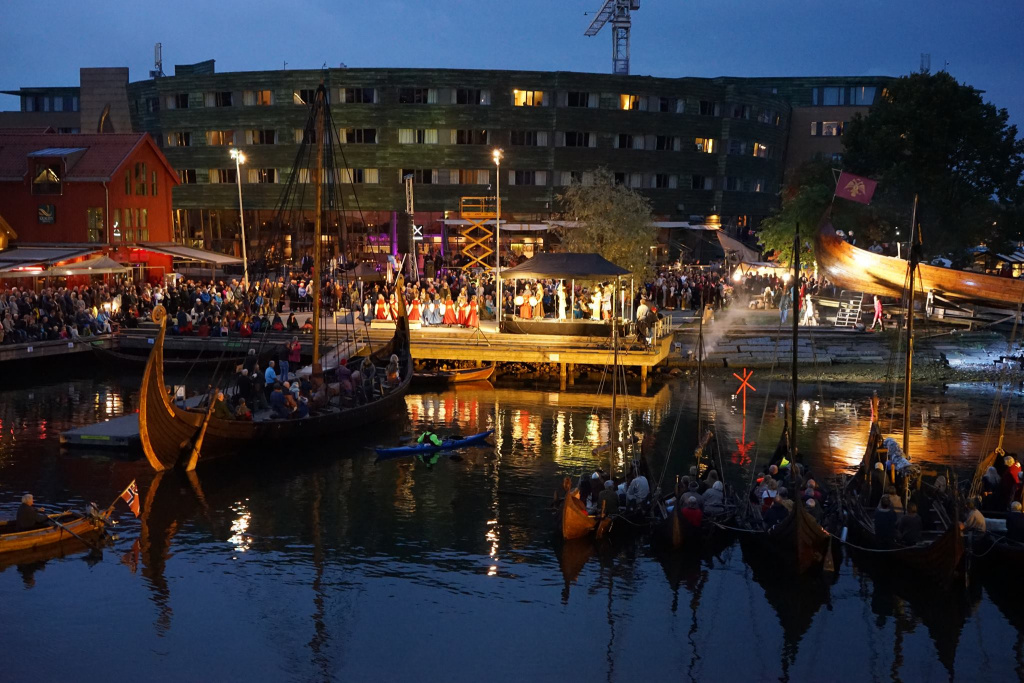The ship is named after where it was discovered in the southern part of County Vestfold. It was excavated and reconstructed by Arne Emil Christensen around 1970. Later in his career professor Christensen became director of the Viking ship museum in Oslo.

The Klastad ship is built of oak and pine and is a typical example of a Viking age trading ship. This was the type of ship that was used for long sea voyages, to Iceland and Greenland and beyond. Even though the Klastad was almost as long as the ships from Oseberg and Gokstad, it would have carried a crew of only 5 to 7 men. The remaining space on board would have been reserved for cargo. This in turn means that it was not a ship for long distance rowing; they would have had to wait for favourable wind conditions.
When shipwrecked the Klastad was carrying a cargo of sharpening stones from Telemark, a Norwegian export for more than a thousand years.
Only 40 per cent of the original ship was preserved. It can be seen at the Slottsfjell Museum in Tonsberg – as the only Viking ship outside of Oslo.
FACTS
- No. of oars: 8
- Length: 20.5 meters
- Width: 5,5 meters
- Rowing speed: 1-2 knots
- Sailing speed: 10-12 knots
- Size of sail: 95 sq. meters


